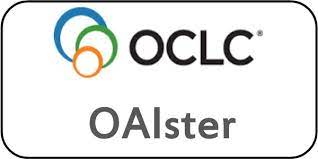Spectrum of Opportunistic Infections in People Living with HIV: A Tertiary Care Center Experience from North India
DOI:
https://doi.org/10.59793/0b7yn386Keywords:
Spectrum,, opportunistic infections,, PLHIVAbstract
Introduction: Patients with human immunodeficiency virus and acquired immunodeficiency syndrome (HIV/AIDS) are prone to
opportunistic infections (OIs) given their immunosuppressed state. OIs continue to cause morbidity and mortality in HIV/AIDS
patients even after highly-active antiretroviral therapy (HAART); hence, attainment of the goals on health care programs,
particularly in resource-poor countries, is hard to achieve. The prevalence of specific OIs varies in different countries and even
in different areas within the same country. Little information is available about the prevalence of OI in HIV patients from
developing countries, especially India. Early diagnosis and prompt treatment contribute to increased life expectancy among
infected patients delaying progression to AIDS. Hence, the present study was carried out to elucidate current frequencies and
spectrum of OIs in HIV seropositive adult patients in Haryana and to evaluate the associated risk factors for OIs. Materials
and methods: This was a cross-sectional study carried out at the Dept. of General Medicine in a tertiary care hospital in North
India. Basic demographic details, anthropometric measurements, symptoms of HIV/OI, clinical examination, biochemical
investigations, and treatment details were recorded. Patients aged 18 to 70 years and HIV seropositive subjects were included
in the study. Results: The study found that about 53.21% of HIV/AIDS patients on ART had one or more OIs. Tuberculosis
(TB) was the predominant OI identified, with a prevalence of 25.71%. Candidiasis and herpes zoster were the second and the
third most prevalent OIs at 13.8% (101/731) and 7.25% (53/731), respectively. Age (43.4 ± 10.7 years), low-income, illiteracy,
low socioeconomic status, initial 4 months since initiation of ART, CD4 count <200/mm3, body mass index of <18.5 kg/m2, poor
ART adherence, hemoglobin, albumin were strongly associated with OIs. Conclusion: The present study shows that TB is the
commonest OI in adults and the overall population of people living with HIV (PLHIV) in Haryana and proves that OIs across
different patient groups vary significantly. Various factors like adherence to HAART, socioeconomic and education status of
patients can influence the occurrence and outcome of these deadly infections.
Downloads
Published
Issue
Section
License
All open access articles published in IJCP are distributed under the terms of the CC BY-NC 4.0 license (Creative Commons Attribution-Non-Commercial 4.0 International Public License). This license permits unrestricted use, distribution, and reproduction of the articles in any medium for non-commercial purposes, provided that: The original authorship is properly and fully attributed. The IJCP is cited as the original place of publication with correct citation details. If an original work is reproduced or disseminated in part or as a derivative work, this must be clearly indicated. No articles are reproduced for commercial use without prior consent from the IJCP. All licensing requests and permissions for commercial use will be managed by the Publisher.














